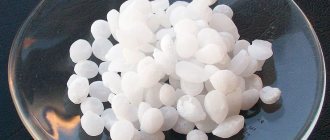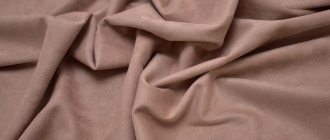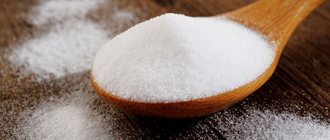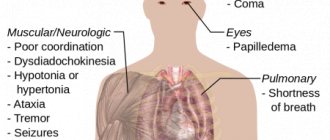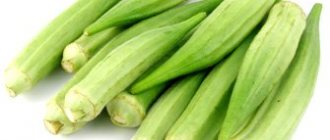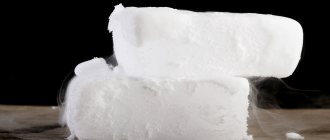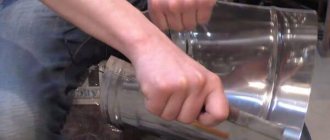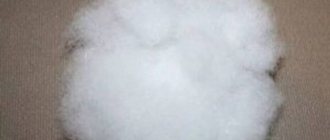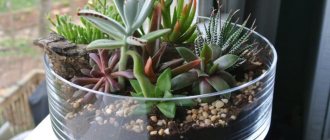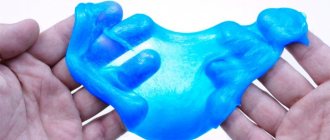Repair work includes the use of various paint and varnish liquids. They perform a decorative and insulating function and increase the service life of materials. One of these mixtures is drying oil. This is a special solution that forms a thin film on the surface of the product. It protects the material from the negative effects of aggressive environmental factors.
Purpose and application
Drying oil contains natural ingredients. If the solution smells, it means that synthetic substances have been added to it. They are represented by the following substances:
- flax oil;
- soybean oil;
- sunflower oil;
- desiccant.
Fats penetrate into the deep layers of the coating, and the drier accelerates the drying process of the material. When performing painting work, drying oil is used as an insulating material. To this day, it has not lost its popularity among professionals. A mixture of natural and chemical components performs a number of functions, thanks to which the solution is widely used in repair work. Using the solution you can solve the following problems.
- Impregnation of wooden surfaces.
- Giving the product a beautiful deep shade.
- Creating a base for oil paint.
- Providing protection against damage to walls by wood parasites, fungus, and mold.
- Moisture-repellent property.
- Preventing the development of corrosion on metal products and putrefactive changes in wood.
- Reducing the amount of paint and varnish materials during subsequent work.
- Improving the adhesion of putties and plasters.
Why does the smell of drying oil not disappear?
Repair work includes the use of various paint and varnish liquids. They perform a decorative and insulating function and increase the service life of materials. One of these mixtures is drying oil. This is a special solution that forms a thin film on the surface of the product. It protects the material from the negative effects of aggressive environmental factors.
Types of drying oil
Depending on the purpose and composition of the solution, drying oil is produced in several versions. The most popular mixtures are presented.
- Natural drying oil - based on flax seed oil and drier. This mixture is viscous and viscous, brown in color, with a slight odor, and does not release toxic components. It is used for treating wood and diluting paints before applying them to surfaces. Therefore, the solution is well suited for indoor work.
- Drying oil oxol - a suspension differs from a natural solution in the presence of a solvent in its composition, which gives it a sharp, unpleasant odor. However, it retains the properties of vegetable oil-based drying oil. The cost of this mixture is cheaper than other analogues. Over time, there is a need to re-treat surfaces, especially in the absence of a paint and varnish surface layer.
- Combined solution - which contains synthetic components of oil refining. This drying oil has a liquid structure and a sharp, unpleasant odor that can cause harm that does not disappear for a long time. It is distinguished by a lighter brown or reddish tint. The solution takes a long time to dry and is highly toxic, so it is not used for indoor work, because you can be poisoned by drying oil vapors.
Important! Before starting repairs, you should carefully study the instructions for use and composition. After opening the package, pay attention to the color of the solution.
What is drying oil?
Drying oil is an oily liquid. It forms a film on surfaces, like oil on water. The color of drying oil is yellowish, brown, cherry. The tone depends on the base of the substance.
Depending on the color of the base substance, drying oil comes in different shades
It is created during the oxidation of vegetable oils. Only those containing linolenic acid are suitable. It determines the ability of oils to dry.
Pour a little into a saucer, leave it in the fresh air, and there you have it, thick lubricant. Applied to the surface, it dries completely, becoming a hard but elastic film.
80 percent maximum linolenic acid in flaxseed oil. 10% less in hemp. 30-50% of the linoleic compound is found in nut, sunflower and poppy oils.
However, without stimulation, natural drying oil is obtained over many months. Industrialists have learned to speed up the process. The sources are boiling. It’s not for nothing that in the old days drying oil was called boiled oil.
When heated, the components of oils that inhibit drying decompose. At the same time, the oxidation of liquids accelerates. The heating here is insignificant. Metal salts, such as manganese, added to oils help. They thicken mixtures within 6-36 hours.
Flaxseed oil turns out light, almost transparent. A dark composition is formed from hemp oil. However, these drying oils dry the same way, about 24 hours. The sunflower mixture takes the longest to harden. In addition, it is inferior to others in moisture resistance.
Drying oil can also dry out in containers. Typically, the mixture is packaged in glass or plastic bottles. In them, the thickening process of oils is minimized, but does not stop.
New portions of oxygen enter the container when it is opened. Using one bottle for a long time forces you to decide how and with what to dilute the drying oil. Let's write down the answers: castor oil, turpentine, white spirit, organic acids. Paint thinners are also suitable. Usually, for 10 parts of drying oil take 1 solvent.
It is not recommended to experiment with drying oil thinners. The oily mixture is flammable. When reacting with “suspicious” solvents, drying oil can ignite and cause a fire.
Poisoning by drying oil vapors
When working with drying oil, vapor poisoning is possible. The likelihood of unpleasant symptoms occurring increases when purchasing a combination solution or oxol. Synthetic components have a toxic effect and can cause serious disorders in the body. The first signs of a pathological condition include the appearance of:
- headaches;
- dizziness;
- nausea;
- vomiting;
- disorientation;
- fainting;
- cough.
When exposed to the odor of the mixture for a long time, toxic components can accumulate, causing not only intoxication, but also more severe functional and organic changes.
If negative symptoms occur, you must leave the room and seek help from a doctor. You should get rid of your work clothes and take a shower. You can resort to taking oral sorbents and drinking plenty of fluids before being examined by a specialist.
Ways to prevent odor before starting work
If the repair process involves working with drying oil, it is better to find out in advance how to remove the smell. However, you can reduce the concentration and it will help it fade faster. To do this, you can use these tips.
- Before painting, leave the windows open and turn on the fan. The blades of the equipment must operate in such a way that the air flow is directed outward from the room.
- In rooms with high humidity, it is better to pre-dry the air using an air conditioner or heater.
- You can add a small amount of essence with mint, lemon or vanilla aroma to a jar of drying oil.
If you have to interrupt work for a short period of time, you must close the container tightly. And after completing the repair, it is better to get rid of the rollers and brushes that were used to apply the solution.
Removal of natural drying oil of vegetable origin
Natural or vegetable-based drying oil can be removed with a regular stain remover for greasy stains.
- To do this, you need to moisten a foam sponge or a piece of rag in a small amount of this substance and rub the stain.
- Then leave it alone for a while, about 10-15 minutes.
- Then wipe with a damp sponge or rinse in water if it is fabric.
Ways to neutralize odor after renovation
There are several ways you can find out how to get rid of the smell of drying oil after applying it. It's better to start with simpler options and then move on to more complex ones. It is important to follow these recommendations.
- Ventilating the premises is the easiest action to take if there is an unpleasant odor. In summer, you can leave the windows and doors open for three days. In winter, periodic access to fresh air through the windows is enough, so the smell disappears faster.
- If the surfaces inside the apartment have not been opened with varnish, then smoke treatment is performed. To do this, 48 hours after airing, take a roll of newspapers, preferably old ones, and set them on fire. The paper should smolder. They fumigate the rooms one by one, paying special attention to the places where drying oil was applied and a persistent smell remained. This method is very popular. You can also light several candles, including aromatic ones, in the rooms where you worked with drying oil.
Attention! It is necessary to close the room with smoke for 20 - 30 minutes, and then ventilate again.
Treatment with drying oil remains a popular method of coating products and surfaces. Following the application rules and recommendations after completion of the repair will prevent unpleasant moments, as well as quickly eliminate the consequences in the form of an unpleasant odor.
How to get rid of drying oil smell | “DesignMaster” is an informational online magazine about renovation.
Few people know what drying oil is and what it is used for. However, almost everyone unmistakably recognizes this pungent and corrosive smell. Drying oil is used by manufacturers to protect wooden surfaces from mechanical damage and destruction under the influence of time, moisture, temperature changes, etc. After installing new furniture in the kitchen, you can “enjoy” its non-specific aroma for weeks and even months. Sometimes such a smell makes you not even want to enter the room. If you are faced with this problem, we advise you to eliminate the smell of drying oil on your own, using simple steps, and forever forget about the headaches that tormented you because of it.
If furniture was treated with drying oil directly in the room, you should immediately begin to ventilate it. Airing should take at least 72 hours. If the weather outside is warm, it is not recommended to close the windows even at night. If it is winter outside and it is not possible to go to another apartment to spend the night with friends or relatives, the windows, of course, will have to be closed. But don’t forget to open the window at night and ventilate the room immediately after you wake up. By the way, it is better to immediately isolate the room in which the treatment was carried out from the rest of the rooms - close the door to it and tuck the gap under the door leaf with rags.
After ventilation, smoke the room. Burn several newspapers in such a way that as much smoke as possible appears in the room. It is best to leave a few newspapers to slowly smolder in an enamel basin or deep porcelain tureen. Take a newspaper that is smoldering and emitting smoke and walk around the room with it. Stand for a few minutes in the place where the drying oil was directly applied (or where the treated furniture is installed). After the procedure, put out the newspaper and throw it into the garbage disposal. Smoke in the room should not be dispelled for at least half an hour. Please note that this method of eliminating odor is not recommended for those rooms where work has been done with varnish or where furniture has just been varnished.
How to remove drying oil smell
Drying oil is used quite often to impregnate various wooden products and wood surfaces. This impregnation is used to protect wood from various external physical, natural and chemical influences and give it a rich color. Everyone is probably familiar that the smell of such a substance as drying oil is pungent and very specific and, in addition, lingers in the air for quite a long time.
After working with drying oil, the room must be ventilated for at least 3 days; if you did the work in the summer, then you can leave the windows open all day. But when it’s cold, try to ventilate the room more often and there is no need to create drafts, close the door to the room and open the window or window.
Chemical means for removing drying oil
The first in the fight against such coatings are special solvents. They allow you to remove only the top film that forms on the surface. To remove previously applied drying oil, you can use solvents and removers such as:
- White Spirit;
- petrol;
- B52;
- solvent
To wash the film from the surface, you need to put on gloves, apply the active substance to a rag and then scrub the wood treated with drying oil. This may take a long time, since the procedure will need to be carried out more than once. When you need to figure out how to remove drying oil, you must remember that this substance is oil-based, so its removal is somewhat difficult. Thus, it is necessary to carry out the drying oil removal procedure several times in order to eliminate at least the surface layer.
When trying to wash off such impregnation from a wooden surface using special solvents, you need to adhere to certain precautions. Such chemicals are highly volatile, so it is necessary to ensure sufficient air flow into the room. If necessary, you should use a respirator to protect your lungs from harmful fumes.
All chemicals that are used to perform such work have an extremely unpleasant aroma, so when the question arises of how to remove the smell of drying oil, they are not the most effective. If it is necessary that not a trace remains of the previously applied layer of this coating, it will be necessary to resort to more aggressive mechanical cleaning methods.
How to get rid of drying oil smell
This will prevent the smell from spreading throughout the entire apartment.
After 2 days of airing, take a couple of newspapers, preferably old ones, then roll them up and set them on fire. As soon as the newspaper catches fire, put it out, the main thing is that it smolders and continues to smoke. Take the newspaper in your hand and walk with it (with the smoldering one) throughout the room, it is advisable to stop for a couple of minutes in the place where the drying oil was applied, then use water to extinguish the newspaper and immediately throw it into the trash bin standing near the porch.
Leave the room with smoke closed for 20 minutes, and then ventilate. However, this method is unacceptable in the room where work with varnishes was carried out.
You can collect water in small containers; for a room of about 20 square meters you need 2-3 containers, place them in different places throughout the room. Change the water daily. Regular salt will help remove the smell of drying oil; put it in small jars or plates and place them where there is an odor; the salt also needs to be changed every day. They also use coffee beans; place them on a piece of paper near the area treated with drying oil. There is no need to change the coffee beans here, just turn them over every day.
No major renovation is complete without the use of paints and varnishes. But how to get rid of the smell of paint in an apartment, which cruelly eats up all the post-renovation joy?
How to get rid of an unpleasant smell in an apartment
It is believed that every home has its own unique smell, which largely favors the creation of a special atmosphere in the home. Of course, any housewife would like to have aromas in her home that give a feeling of comfort and peace, but due to certain circumstances, the question of how to get rid of an unpleasant smell in an apartment can become especially relevant for the homemaker. Let's try to study the most common causes of unpleasant odor in the house and give the most effective methods to combat it.
The smell of smoke
You can try to defeat the corrosive aromas of smoke in a trivial way, just by organizing large-scale ventilation in the apartment while simultaneously carrying out at least light wet cleaning. It is not necessary to rush headlong to “generalize” the home if it does not require it, but in order to solve the issue of how to get rid of the smell of smoke in the apartment, you will need a simple wet cleaning, which involves refreshing the floors in the home, wiping the shelves and furniture.
At the end of cleaning, it is enough to add the final touch to the atmosphere by spraying a little air freshener or placing a lit aroma lamp on the window, and after a couple of hours you can safely forget about the trouble.
The smell of fried fish
Cooking this simple but quite tasty dish is almost always accompanied by the formation of not very pleasant odors. It is for this reason that experienced housewives always try to cook fried fish with the hood on or the window slightly open. To further avoid the problem of how to get rid of the smell of fried fish in an apartment, you can take these simple tips into account, and also, if the aroma of fried food is very intense, use the above recommendations.
To completely eliminate the smell of fried food, it is advisable not to be lazy and thoroughly wash the stove, countertop and other surfaces adjacent to the stove on which oil particles may have settled after frying. At the end of all procedures, it is enough to ventilate the kitchen thoroughly and spray a little air freshener into the air.
The smell of urine in the house
This specific amber often settles in houses where children live and where bedridden patients stay. To prevent the question of how to get rid of the smell of human urine in an apartment from arising, timely and regular wet cleaning of the house followed by ventilation will be required. When doing this, make sure that there are no children or bedridden sick people in the ventilated room.
The use of special detergents that do not cause allergies in either children or adults destroys the smell of urine and prevents its subsequent appearance. As auxiliary means, it is recommended to use dry flavors, containers with dry ground coffee and activated carbon, which perfectly absorbs extraneous odors.
The smell of animal urine in the house
The presence of animals in the house can often be determined by a specific smell, in particular when a cat or ferret lives in the apartment. During the period of love games, these animals often mark the territory in which they live. To solve the problem related to the question of how to get rid of the smell of a ferret in an apartment, or how to eliminate the smell of cat urine, you will again have to resort to wet cleaning.
During the cleaning process, traces of animal marks are treated with vinegar, potassium permanganate, hydrogen peroxide, or special means designed to eliminate extraneous odors. To avoid having to deal with this problem again in the future, it is advisable to train your pet to use the litter box in a timely manner. In some cases, owners even resort to such a method as sterilization and castration of pets.
The smell of drying oil, solvents and paint
After renovation work, owners of a freshly renovated home inevitably face the question of how to get rid of the smell of drying oil in the apartment and, along with it, eliminate other aromas of recently completed renovations?
Fortunately, all these odors disappear fairly quickly, but the apartment owners will have to endure them for some time while they remain in the air. To speed up the odor elimination process, the home must be ventilated as often as possible. If the situation caught the owners in the summer, then at this time the windows do not need to be closed at all for the whole day.
Another way to displace the smell of drying oil is to deliberately smoke the apartment. The smell of smoke disappears much faster, and it can also displace these aromas. To carry out this procedure, simply place a couple of sheets of paper in a metal bucket, then set them on fire and, if necessary, extinguish them with water. The smoke in the room should remain for at least half an hour, after which the room can be ventilated. Please note that using smoke you can only displace the smell of drying oil, but experts strongly do not recommend using this method to combat, for example, varnish odors.
Your actions after repair
To get rid of paint smell immediately after renovation, you need to be patient and use effective methods!
At all times, airing has been the most effective method to get rid of any odor.
Nothing has changed these days. The longer the windows and balcony doors are open after renovation, the less your things, furniture and you will smell of paint. By the way, be sure to get rid of the source of the smell: used painting supplies (roller, brushes), tray and container where the paint and varnish material was stored.
After intensive ventilation, wipe all wooden parts of the interior with water and mustard: add 1-2 tablespoons of dry mustard to 10 liters of water. A vinegar or ammonia solution will help get rid of the annoying smell in the apartment: dissolve a tablespoon of vinegar or ammonia in 5 liters of warm water. Wash the painted surface with it.
To prevent the smell of paint after renovation from lingering in your apartment for a long time, literally smoke it out. Light a few candles and leave them burning for four hours. Along with oxygen, they will also burn the smell of paint - that’s the whole secret of smoking. And if you don’t skimp and buy scented candles, your home will be filled with real fragrance!
Just be extremely careful with fire so that you don’t have to wonder how to get rid of the burning smell in your apartment.
Wet several terry towels and old sheets, hang them around the apartment, and place wide containers of cold water on the floor. Moisture perfectly absorbs all odors and will help remove this one too.
Ground coffee, baking soda with a few drops of ammonia, charcoal, salt are excellent absorbents. Pour them into flat containers and place them around the perimeter of the room. They will help you get rid of the chemical smell in no time. And ground coffee beans will fill your home with the incomparable aroma of an invigorating drink!
Don’t be afraid to combine different methods: this way you’ll have a better chance of getting rid of paint smell faster and truly enjoying the results of your renovation.
Dyes are used everywhere in various areas of everyday life and production. Pigments are substances that give paints and enamels color; their chemical structure can be mineral and organic, natural or synthetic.
Paints are highly toxic due to the heavy metal compounds they contain, so-called metal poisons (arsenic, zinc, lead, copper), or organic compounds. Toxic components included in paints and varnishes most often adversely affect the skin, respiratory system and gastrointestinal tract.
After drying, all paints lose their toxic properties.
How does paint vapor poisoning occur?
The most dangerous paint components are solvents (toluene, dimethyl ketone, butanol, butyl acetate, etc.). Possessing high volatility, they have a local irritating effect on the skin, mucous membrane of the eyes, nasopharynx and oropharynx. Penetrating into the respiratory tract and then into the lungs, these substances can cause a number of acute respiratory diseases, a relapse of chronic pathology or an allergic reaction in persons with a predisposition. Toluene is able to penetrate not only through the respiratory organs, but also through intact skin, causing damage to the central nervous system of varying severity, including irreversible ones.
Once in the body in large quantities, solvents cause acute general intoxication.
The maximum permissible concentration, which characterizes the degree of harmfulness of the solvent, is individual for each chemical substance.
Most often, paint vapor poisoning occurs during painting work:
- painting large surfaces;
- working with paints in a room where there is no adequate ventilation;
- Carrying out painting work in a room with high temperatures, when increased evaporation of solvents occurs;
- work without personal protective equipment (respirator, gloves);
- use of low-quality material with excessively high content of heavy metals and solvents;
- independent dilution with solvents of paints that have lost their performance characteristics.
You can suffer not only from volatile compounds when working with fresh paints, but also when scraping off old paintwork or burning painted decorative elements.
Mechanical methods for removing drying oil from wood
It is most convenient to remove a layer of this coating using devices such as a drill with a special attachment, a grinding machine, etc. If there are no such units that can make the job easier, you can clean the wood from the old olive using fine-abrasive sandpaper.
The advantages of such methods include the fact that in order for the abrasive surface to remove the old layer of drying oil, there is no need to prepare the material for processing. Regardless of which option you use, you need to take care of your health.
The work must be carried out in a respirator to protect the lungs from dust, of which there will be a lot. Removal of old drying oil should be carried out gradually, carefully cleaning it from the surface. This will allow you to achieve a better result without harming the wood. It is worth noting that this method of influence is usually quite expensive.
Sandpaper and special attachments quickly become clogged and have to be changed frequently. In most cases, even this method of exposure does not allow 100% removal of drying oil that has been absorbed deeply into the material. In addition, with this exposure there is a high risk of surface damage.
You can also use a hair dryer, scraper and soft rags to remove the coating. First of all, it is necessary to thoroughly warm the surface layer of drying oil. You need to treat a small area, as it will immediately begin to cool. Next, you should carefully remove the softened material from the surface with a scraper. After this, the treated area must be calcined again. Dried drying oil must be wiped off with a rag.
Symptoms of poisoning
Intoxication when interacting with paints can be both acute and chronic.
Signs of acute paint vapor poisoning are:
- cyanosis (blue discoloration of the skin);
- nausea, vomiting;
- confusion, deafness;
- severe general weakness;
- dizziness, intense headache;
- sneezing, dry hacking cough;
- watery eyes, nasal discharge (rhinorrhea);
- sore throat, nasopharynx;
- feeling of a foreign body and burning in the eyes;
- noise in ears.
General symptoms may be supplemented by signs of poisoning of a specific solvent used in the paint. Thus, in case of poisoning with dimethyl ketone (acetone) vapors, damage to the nervous system occurs, the clinical picture of which is similar to that of intoxication. Intoxication with butyl acetate vapor is characterized by intense burning of the nasopharynx, oral cavity, and eyes.
In case of chronic intoxication, which is more common among people who come into daily contact with paints and varnishes, symptoms of poisoning appear gradually over a long period of time:
- deterioration in general health, decreased mood;
- digestive disorders (nausea, heartburn, belching, bloating, stool disorders, lack of appetite);
- burning, itching in the eyes, conjunctival hyperemia;
- sleep disorders (insomnia, interrupted sleep, nightmares);
- persistent non-productive cough.
First aid for paint vapor poisoning
At the first symptoms of acute paint vapor poisoning, you must:
- evacuate the victim from the place of exposure to toxins;
- ensure a flow of fresh air (open windows, doors, unbutton tight clothes);
- give plenty of alkaline drinks (milk, mineral water);
- If paint or solvent gets on your skin, rinse immediately with plenty of water.
In case of chronic poisoning, first aid measures are ineffective; qualified medical assistance is required.
Prevention
You can prevent paint poisoning if you follow a number of requirements:
- work in special clothing that covers all parts of the body;
- if paints and varnishes come into contact with the skin and mucous membranes, rinse immediately with plenty of running water;
- work only using personal protective equipment (goggles, respirator, gloves);
- ensure effective ventilation in the room where work is being carried out;
- When working with paint for a long time, take regular breaks, during which you can breathe fresh air.
Acrylic paints are the safest because they do not contain solvents and dry quickly. An alternative to acrylic dyes are water-based dyes, which do not have a strong odor and are not susceptible to moisture.
Video from YouTube on the topic of the article:
The information is generalized and is provided for informational purposes. At the first signs of illness, consult a doctor. Self-medication is dangerous to health!
Scientists from Oxford University conducted a series of studies in which they came to the conclusion that vegetarianism can be harmful to the human brain, as it leads to a decrease in its mass. Therefore, scientists recommend not completely excluding fish and meat from your diet.
The rarest disease is Kuru disease. Only members of the For tribe in New Guinea suffer from it. The patient dies of laughter. The disease is believed to be caused by eating human brains.
Four pieces of dark chocolate contain about two hundred calories. So if you don’t want to gain weight, it’s better not to eat more than two slices a day.
Even if a person's heart does not beat, he can still live for a long period of time, as the Norwegian fisherman Jan Revsdal demonstrated to us. His “engine” stopped for 4 hours after a fisherman got lost and fell asleep in the snow.
According to WHO research, talking on a mobile phone for half an hour every day increases the likelihood of developing a brain tumor by 40%.
You are more likely to break your neck if you fall off a donkey than if you fall off a horse. Just don't try to refute this statement.
The human stomach copes well with foreign objects without medical intervention. It is known that gastric juice can even dissolve coins.
It was previously believed that yawning enriches the body with oxygen. However, this opinion has been refuted. Scientists have proven that yawning cools the brain and improves its performance.
When lovers kiss, each of them loses 6.4 calories per minute, but at the same time they exchange almost 300 types of different bacteria.
More than $500 million a year is spent on allergy medications in the United States alone. Do you still believe that a way to finally defeat allergies will be found?
When we sneeze, our body stops working completely. Even the heart stops.
In the UK there is a law according to which a surgeon can refuse to perform an operation on a patient if he smokes or is overweight. A person must give up bad habits, and then, perhaps, he will not need surgical intervention.
According to statistics, on Mondays the risk of back injuries increases by 25%, and the risk of a heart attack by 33%. Be careful.
A person taking antidepressants will, in most cases, become depressed again. If a person has coped with depression on his own, he has every chance to forget about this condition forever.
The task of accurately establishing paternity is as ancient a problem as the search for the meaning of life. At all times, men were interested in whether they were raising their own children.
Cosmetic or major repairs are not only fraught with significant expenses - they can cause significant damage to health. The fact is that most paints and varnishes have a high degree of toxicity. If safety regulations are not followed, their fumes penetrate the body and cause intoxication.
The chemical composition of such materials contains salts of heavy metals - copper, lead, zinc and arsenic. In addition, to obtain a rich shade, synthetic dyes are introduced into solutions. But the greatest danger is posed by highly volatile solvents:
- acetone;
- toluene;
- butanol;
- solvent;
- dimethyl ketone;
- trichlorethylene;
- butyl acetate;
- carbon tetrachloride.
Through the mucous membranes they enter the blood and spread throughout all internal systems. The relatively safe dosage of a chemical varies depending on the degree of toxicity of the toxic substance and the individual characteristics of the body. Intoxication poses the greatest danger to young children, allergy sufferers, and people with chronic respiratory pathologies and weakened immune systems.
Where is drying oil used?
Drying oil for wood is the main use of the heroine of the article. By impregnating the cellulose fibers, the oily liquid not only protects them from rotting, fungi and insects, but also decorates them.
The color of the mixture is transferred to the wood, emphasizing its structure. In other words, buy drying oil as a stain. The only difference is that classic stains are water soluble and were invented in the 19th century. Drying oil is not diluted with water and has been known to mankind for millennia.
Metal products are also coated with drying oil. Alloys, like wood, protect against moisture. It oxidizes metals. This is the cause of rust. Some alloys are not subject to it, for example, the noble group, aluminum and zinc.
But non-galvanized steel deteriorates from atmospheric moisture. By forming a waterproof film on the surface of the metal, drying oil extends the service life of products made from it.
In interior decoration, drying oil is used as a primer. This is the name given to compositions applied to walls prepared for a finishing coat, for example, painting.
By covering the plastered surfaces with a thick film, drying oil blocks the penetration of pigments into the walls. As a result, the whiteness of the finishing plaster is maintained and paint consumption is reduced.
True, the savings are imaginary. Natural drying oil is expensive. For every square meter of plastered walls, 80-150 milliliters of an oily mixture are used. This is when priming in 1 layer. It is recommended to apply drying oil in 2 layers.
Before painting with drying oil, you can cover any porous surfaces, even a sponge. Paints adhere better to an oily film. The problem is that the final coating does not hide the acrid smell of drying oil.
Its “aroma” disappears within a few days. Buckets of water placed around the room can speed up the process. By the way, a pungent odor is characteristic only of composite drying oil. We will explain what the concept means in the next chapter.
Drying oil is used as an additive in oil paints and putties. The latter can be made at home using crushed chalk, plaster and wood glue. You will get the most natural and reliable composition.
Drying oil protects wooden surfaces from moisture and rotting
Drying oil in it is a bonding agent. By binding loose masses, the oily substance facilitates the application of putty and its adhesion to the surface. Plus, drying oil blocks the development of mold on a layer of chalk and gypsum. Fungi attack plaster and putties, just like wood.
How dangerous is paint poisoning?
Toxic fumes affect the digestive, circulatory and nervous systems. With prolonged contact with paints and varnishes, their effect may not be visible externally, but at the same time slowly poison the body. Acute paint poisoning is no less harmful - it leads to disorders of the digestive, circulatory and nervous systems. If a person carries out repairs alone, he may feel a sharp, sudden weakness or lose consciousness - and will not even be able to call for help.
After inhaling toxic fumes, the following phenomena occur in the body:
- functional disorders in the functioning of the cardiovascular system develop - arrhythmias, hypotension;
- the functioning of the respiratory system is disrupted due to a chemical burn, which provokes insufficient oxygen supply, dizziness, and headaches;
- visual function decreases due to irritation of the mucous membrane.
The paints used for wall decoration can cause the greatest harm to the body:
- aerosol - quickly penetrate the respiratory system due to the finely dispersed form of the particles;
- alkyd (especially oil) – contain harmful chemical additives that a regular respirator will not protect against;
- adhesive - are a mixture of synthetic oils and adhesive solution, which negatively affects human health.
All of them are highly toxic and require strict adherence to safety regulations. The following types of paints and varnishes are considered relatively harmless:
- silicate - do not pose a danger if direct contact is limited and proper ventilation of the room is ensured;
- emulsion - non-toxic, do not have an unpleasant odor, do not provoke allergic reactions;
- water-dispersed - do not contain solvents.
From a medical point of view, there are two types of poisoning:
- acute, occurs in the case of one-time intoxication, is characterized by pronounced symptoms, causes significant damage to health;
- chronic, observed in professional builders, characterized by general depression, weakness, and the development of depressive states.
If poisoning from paint fumes occurs systematically, the effects of toxins may take several months to appear. In case of acute intoxication, signs of paint poisoning are noticeable within a few hours. The way toxins enter the body may also vary:
- inhalation of paint fumes;
- inhalation of combustion products of old finishing;
- ingestion of paint;
- close physical contact (penetration through skin pores).
The first two options pose the greatest health hazard. They are also the most common among professional builders and DIY home repair enthusiasts.
Common symptoms of paint poisoning include:
- the appearance of unbearable headache;
- paleness of the skin;
- tingling sensation on the skin;
- increased tearfulness;
- sneezing, swelling of the nasopharynx, cough;
- irritation of mucous membranes;
- nausea, vomiting and diarrhea (in some cases);
- pain in the liver area;
- unpleasant taste on the tongue, bad breath;
- difficult and painful inhalation;
- disorientation;
- temperature rise to 39 degrees;
- dizziness, drowsiness, loss of consciousness.
In addition, specific symptoms are possible, differing depending on the toxic component:
- acetone vapor gives your breath a pronounced chemical aroma;
- butyl acetate provokes a burning sensation in the nasopharynx, eyes and mouth;
- trichlorethylene and acetone cause euphoria, similar to alcohol intoxication.
Chronic intoxication, which is observed in almost all professional workers, is characterized by the following symptoms:
- regular headaches;
- apathy, depression, fatigue;
- dry non-productive cough;
- digestive disorders;
- irritation and dryness of mucous membranes;
- sleep disorders;
- lack of appetite.
